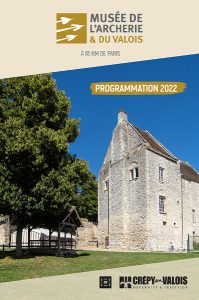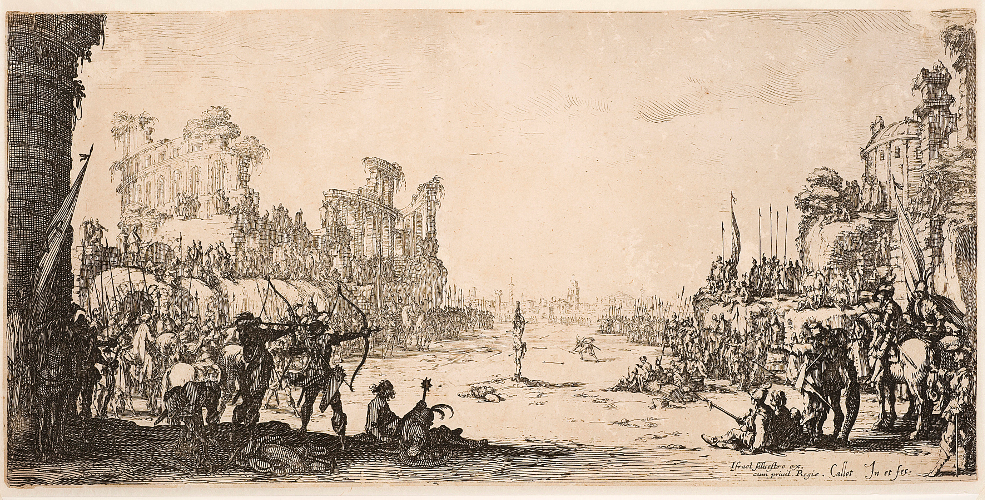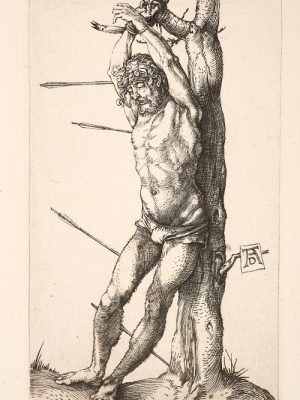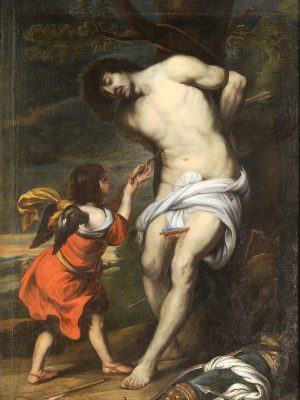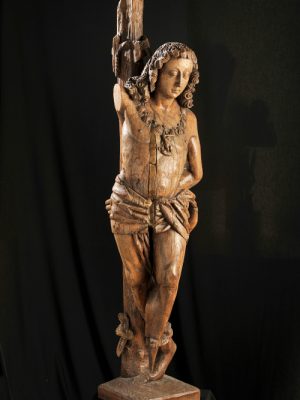Martyrdom of Saint Sebastian
Jacques CALLOT (1592-1635)
France
Towards 1631
Etching on laid paper, water-marked
Deposit from the Museum of Franco-American cooperation, château of Blérancourt, 1977
Inv. DSa92
______________
We do not know the exact date of creation of the Martyrdom of St Sebastian, but it is very probable that this artwork dates from 1631. Indeed, Lorraine was affected at that time by an important plague epidemic, during which Jacques Callot’s father died. St Sebastian being one of the saints summoned against this plight, he must have made this etching during this period.
Three ensemble sketches and sixteen studies of this engraving are known. They help funderstand the artist’s progress in its conception.
The saint, in the center, is alone in an empty space. Soldiers and numerous spectators are around him. The decor sets the scene in Rome: on the left a rotund temple is represented, on the right the Coliseum, and in the background numerous Roman monuments are recognizable. These architectures are proof that Callot travelled to Rome between 1609 and 1612. As in others artworks of the artist, the scene is filled with details, the line is precise and dynamic and the aerated aspect of the central figuration gives an impression of grandeur to the representation.
Jacques Callot
Jacques Callot (1592-1635) is a famous Lorrain draughtsman and engraver from the 17th century. Considered as one of the masters of engraving, he was the inventor of several innovations, in particular the use of “hard ground” and the échoppe.
Until then, etchers used a soft ground that didn’t allow artists to put their hand of the plate during the engraving because of the long drying time. Moreover, they had to quickly dip the engraved plate in the acid. Callot’s “hard ground”, borrowed from Florentine and Venetian luthiers, had a very quick drying time which allowed etchers not to be bothered during the etching and thus to be better invested in their drawings.
In his youth, Jacques Callot was the apprentice of an goldsmith master. Even though he never finished his training, he used the échoppe, a type of triangular scissors used by goldsmiths, for his engravings. This tool allows a more dynamic outline, and can create “downstrokes and upstrokes”, by playing on the depth of the line. He also abandoned hatching, used until then for dark areas, for the benefit of “intaglio”.
He also invented the technique of “stopping-out”, which, by dipping the copper plate in several successive baths of acid, enables to get a more or less deep bite and thus a different layer of ink.
These different technical innovations allowed Jacques Callot to distinguish himself by creating artworks filled with always visible details, despite the limited size of the copper plates.



